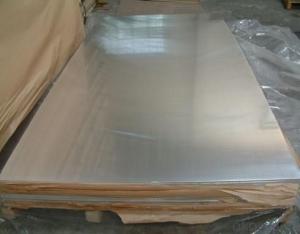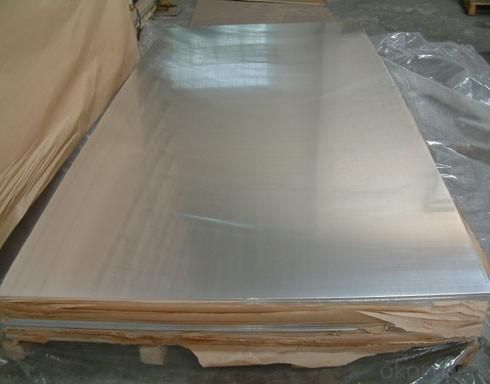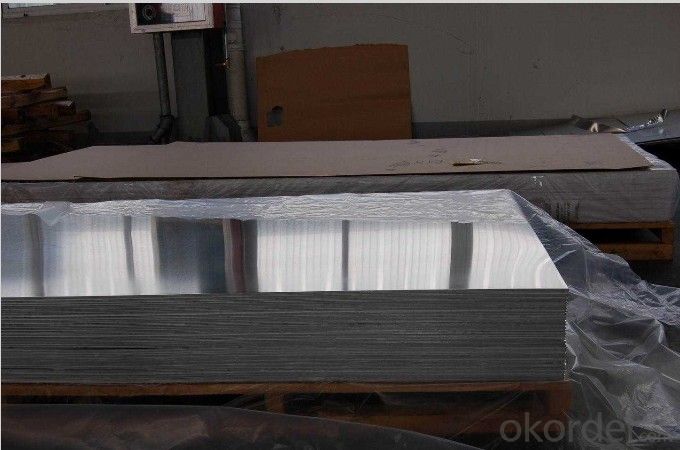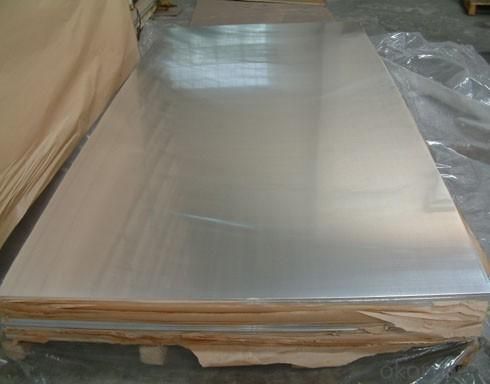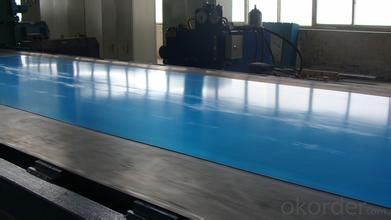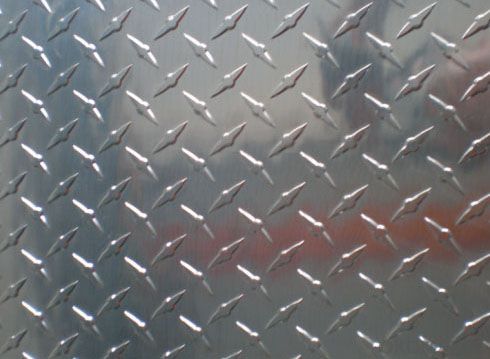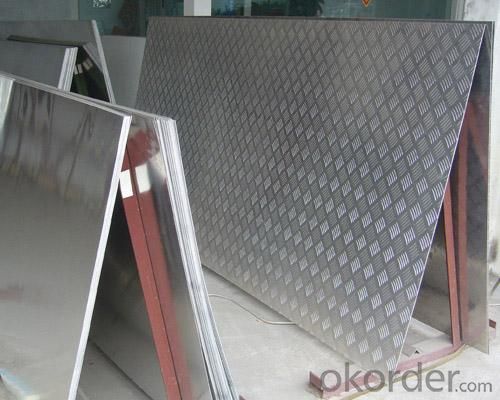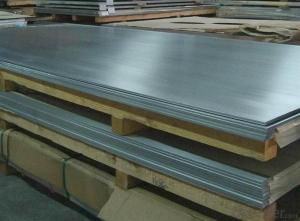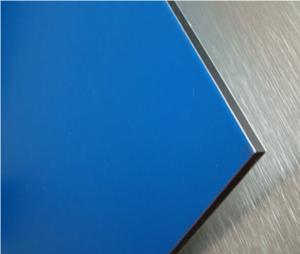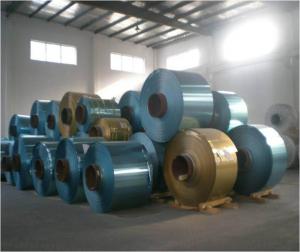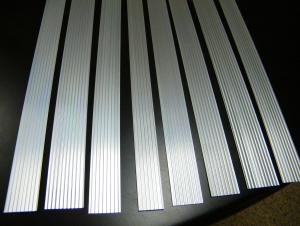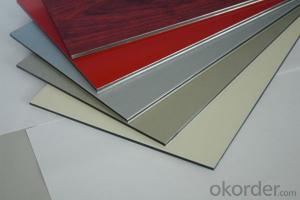4mm Aluminum Sheets - 0.6mm Sublimation Coated Aluminium Sheet (MK910)
- Loading Port:
- Shanghai
- Payment Terms:
- TT OR LC
- Min Order Qty:
- 5 m.t.
- Supply Capability:
- 20000 m.t./month
OKorder Service Pledge
OKorder Financial Service
You Might Also Like
Specification
Aluminum Sheet for Making Aluminum Composite Panel
Aluminum sheet specifications:
1) Alloy : 1050 1060 1070 1100 2024 3003 3004 3105 3A21 5005 5052 5083 5754 5182 5454 5456 6061 6063 7075 8011 etc
2) Temper: O/H12/H14/H1/H18/H32/H34/H36/H38//H111/H112/H116/H321/T6/T651/T3/T351 etc
3) Thickness: 0.1mm to 300mm
4) Width:20mm to 3300mm
5)Length: ≤ 12000mm
6) Protective film can be added
7) Production Line: DC and CC production line
Discription:
Width: 50-800mm
Thickness: 8-25mic
Length: 3-300m
Character:
High-temperature sterilization
Made of advanced food grade alu material,no pollution
Eco-friendly, recoverable and recyclable
Application:
widely used for food cooking, freezing wrapping, storing etc, the main application are for household and catering, which are targeting for retail market and food service market, such as hypermarket, chain store and hotel, restaurant etc.
Packing:
One roll in an individual box or printed PP bag
Certain quantities in a standard carton
Depends on customer’s request
Service
1. We have the good and professional team, have a good after-sales service.
2. Accept any drawings or your samples to develop new product.
3. Offer relateive technical support,quick response,all your inquire will replied within 24 hours.
4. OEM, buyer design, buyer label services provided.
5. Have the certification of ISO 9001, SGS.
6. Special discount and protection of sales area provided to our distributor.
FAQ
Q1:Do you provide sample? How many days will samples be finished?
Free samples will be provided if needed, but customers should undertake shipping cost or freight charges, samples will be finished in 5-7days
Q2: Can we visit your factory?
Welcome to our factory at any time.
Q3: Complaint solving process
Finding your salesman—Salesman provide you the solution (If it’s our responsibility, we will resend substitutes or return money or provide discount for your next order, etc.; If it’s shipping company’s responsibility, we will also help you until the problem is resolved.) —If salesman can’t solve your problem, please call our manager .
Q4: Delivery time
3~30working days after confirming the payment. If the order is urgent, we will push our workers to finish in advance.
Q5: What's your MOQ?
Normally 8MT are requested as the minium order quantity ,we shall give
additional instructions in special circumstances.
Q6: What are the terms of payment and currencies do you accept?
T/T or L/C is accepted, currently we appreciated your payment through
USD,EUR, RMB
Q7: Do you accept customized orders?
Yes, we do. Your customized orders are always welcomed. Please kindly offer us your samples or drawings, so that we can customize the products according to your preferences. About any further detail, please feel free to contact us.
Q8: What information should I let you know if I want to get a quotation?
Your detailed requirements regarding the products's dimensions, including shape, thickness, top out (length*width*height), and your order quantity are highly appreciated if you want further information about our quotation
Q9: How about the mass production?
The lead time of mass production depend on quantity, usually 25-30days (20FT) .
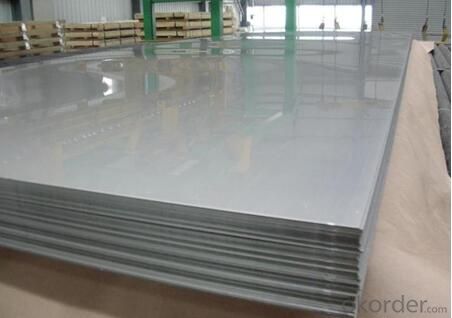
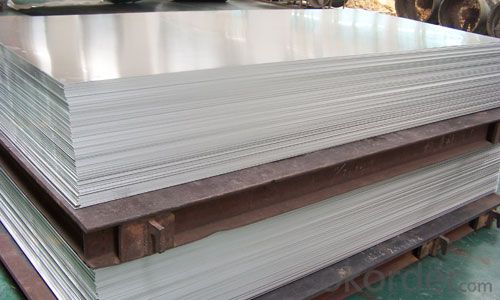
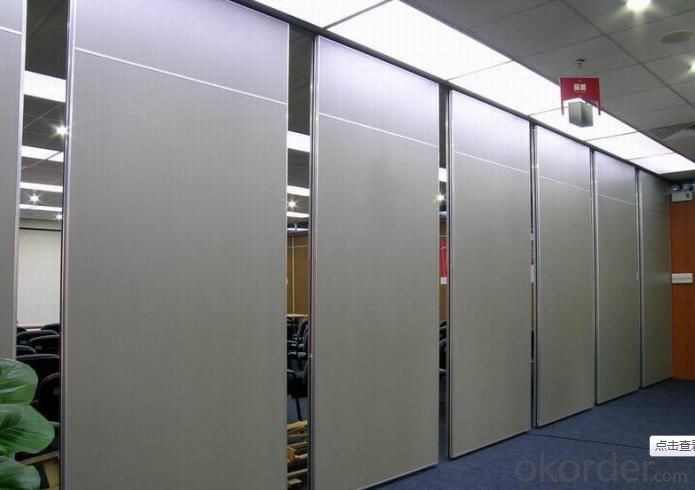
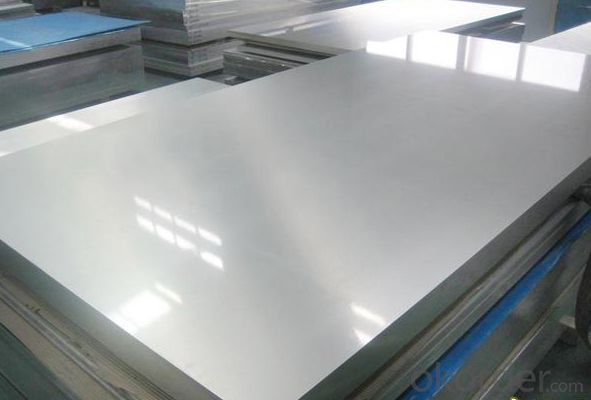
- Q: Are aluminum sheets suitable for welding?
- Aluminum sheets are indeed suitable for welding, being widely used in various industries for their lightweight, corrosion resistance, and excellent thermal conductivity. However, welding aluminum presents challenges due to its high thermal conductivity and the formation of an oxide layer on its surface. Nevertheless, successful welding of aluminum sheets can be achieved with proper techniques and equipment. Tungsten Inert Gas (TIG) welding and Metal Inert Gas (MIG) welding are commonly employed for aluminum welding. These processes allow for precise heat control and the use of shielding gases to protect the weld pool from oxidation. In addition, achieving strong and reliable welds requires proper surface preparation, cleaning, and the use of specialized aluminum welding wires or rods. Overall, while specific techniques and equipment may be necessary, welding aluminum is feasible and widely practiced in various industries.
- Q: How to distinguish fluorocarbon spraying and powder spraying aluminium plate
- 1. Identification of fluorocarbon spraying and powder spraying aluminum plate:(1) measuring thickness, fluorocarbon three coated with 40UM, and powder coating at least 60UM.(2) surface evenness, fluorocarbon is generally paint, surface smoothness is higher, leveling is better. The powder spraying has poor flatness. Orange peel phenomenon is obvious.(3) look at the back of the workpiece. The back of the workpiece in the transition area of powder coating spraying and spraying, obviously rude sense. And paint is better.(4), the experiment, with a knife or about 400 mesh sandpaper graze back coating, causes the inclined fault. If there are different colors, then fluorocarbon (if not found, you can use a magnifying glass).
- Q: Is it possible to use aluminum sheets as a material for the exterior walls of a building?
- <p>Yes, aluminum sheets can be used for exterior walls. They are lightweight, durable, and resistant to weathering and corrosion, making them suitable for facades. Aluminum sheets can be easily shaped and offer design flexibility. They also have good thermal properties and can be coated or finished in various ways to enhance their appearance and performance. However, they may not provide the same insulation as traditional materials, so additional insulation may be required.</p>
- Q: Can aluminum sheets be used for air ducts?
- Yes, aluminum sheets can be used for air ducts. Aluminum is a commonly used material for air ducts due to its lightweight and durable properties. It is resistant to corrosion, which makes it a suitable choice for HVAC systems. Aluminum sheets are often used to fabricate air ducts as they can be easily bent and shaped to fit the required dimensions. Additionally, aluminum has good thermal conductivity, allowing for efficient heat transfer within the ducts. Overall, using aluminum sheets for air ducts is a practical and effective choice.
- Q: Can someone explain the movement of electrons in a pure block of aluminum metal? At they free to move around between similar energy levels? Are they bound to Al atoms? What about orbital overlap?
- Any element that allows the transfer of electrical flow to move across it usually has the characteristic of having free movement electrons in the outer shell. This is why metals are particularly good at electrical conduction. The best metal for transferring electrical charge is silver followed by copper and then aluminum. Much electrical wire is made from pure aluminum because it is cheaper than copper or silver and the resistance to flow is only slightly lower than copper. The electrons in the outer shells are still bound to the aluminum nucleus but they are free to accept a charge from neighboring aluminum atoms and transfer that charge to the next aluminum in the electrical flow. This is basically the definition of electrical resistance. Copper performs this transfer more efficiently than aluminum so it's electrical resistivity is less than aluminums. But in both base metals, the outer electrons never leave the atom, they simply transfer their charge to the next atom in line
- Q: Are aluminum sheets suitable for roofing?
- Yes, aluminum sheets are suitable for roofing. They are lightweight, durable, and resistant to corrosion, making them an excellent choice for roofing materials. Additionally, aluminum sheets have good thermal properties, reflecting sunlight and helping to keep the building cool.
- Q: Can aluminum sheets be used for food processing equipment?
- Yes, aluminum sheets can be used for food processing equipment. Aluminum is a popular choice in the food industry due to its numerous beneficial properties. It is lightweight, durable, corrosion-resistant, and has excellent thermal conductivity. These properties make aluminum sheets ideal for various applications in food processing equipment, such as mixing bowls, cooking utensils, baking trays, and food storage containers. Additionally, aluminum is non-toxic and does not react with food, ensuring the safety and quality of the processed products. However, it is important to note that aluminum should not come into direct contact with acidic or alkaline foods, as it may react and affect the taste or quality of the food. In such cases, a protective barrier or lining should be used. Overall, aluminum sheets are widely used in the food industry due to their versatility, durability, and food-safe characteristics.
- Q: Can aluminum sheets be powder coated?
- Indeed, it is possible to powder coat aluminum sheets. Powder coating, a widely utilized technique for achieving a sturdy and appealing finish, entails the application of dry powder to surfaces, specifically aluminum, followed by heat treatment. Aluminum is a favored choice for powder coating, owing to its lightweight, corrosion-resistant, and adaptable properties. Through the powder coating process, aluminum sheets acquire a flawless, uniform, and enduring surface. Moreover, this method offers an extensive array of color choices and finds extensive utility in architectural, automotive, and industrial settings.
- Q: Can aluminum sheets be used for lithographic printing plates?
- Yes, aluminum sheets can be used for lithographic printing plates. Aluminum is commonly used in lithography due to its excellent characteristics such as light weight, corrosion resistance, and durability, which make it suitable for the printing process.
- Q: How does the formability of aluminum sheet vary with different alloys?
- Variations in chemical composition and mechanical properties result in significant differences in the formability of aluminum sheet among different alloys. To enhance specific characteristics like strength, corrosion resistance, and formability, aluminum alloys are typically combined with elements such as copper, manganese, magnesium, and zinc. Aluminum alloys like the 1xxx series (pure aluminum) and the 3xxx series (manganese alloyed) are highly formable and commonly used for deep drawing applications. These alloys can be shaped into complex forms without cracking or tearing. In contrast, alloys with higher strength properties, such as the 2xxx series (copper alloyed) and the 7xxx series (zinc alloyed), generally have reduced formability. Although these alloys are often used in structural applications where strength is crucial, they require careful handling and processing to avoid defects during forming. Alloys in the 5xxx series (magnesium alloyed) offer a good balance of formability and strength. They are widely used in industries like automotive and aerospace, as they can be easily formed into different shapes while providing sufficient strength and corrosion resistance. It's important to note that the formability of aluminum sheet is not solely determined by the alloy composition. Other factors such as sheet thickness, forming temperature, and the specific forming process employed (e.g., deep drawing, bending, stretching) also influence formability. These factors interact with alloy properties to affect the formability characteristics of aluminum sheet. Therefore, careful selection of the appropriate alloy and process parameters is essential to achieve the desired formability for specific applications.
Send your message to us
4mm Aluminum Sheets - 0.6mm Sublimation Coated Aluminium Sheet (MK910)
- Loading Port:
- Shanghai
- Payment Terms:
- TT OR LC
- Min Order Qty:
- 5 m.t.
- Supply Capability:
- 20000 m.t./month
OKorder Service Pledge
OKorder Financial Service
Similar products
Hot products
Hot Searches
Related keywords
